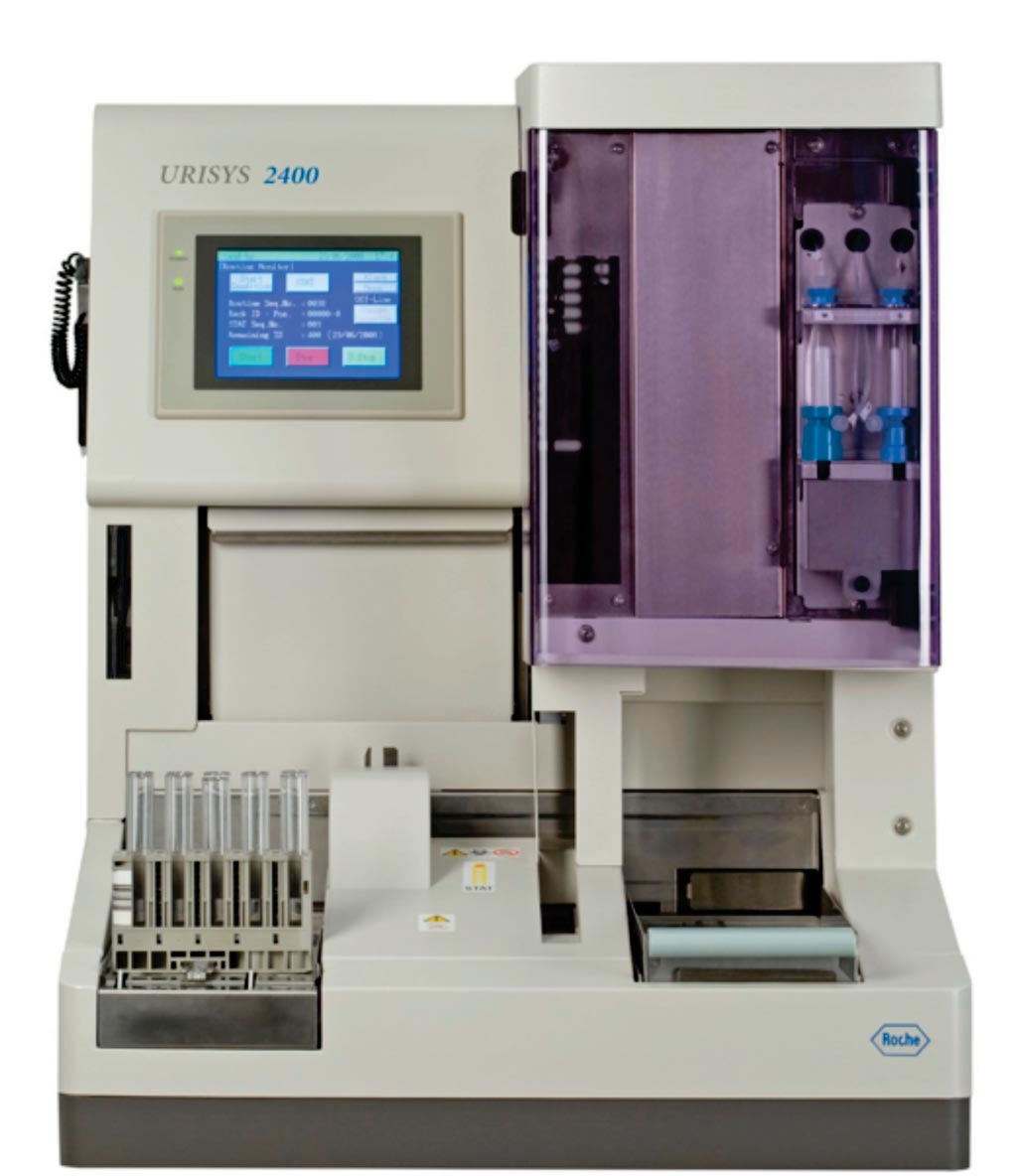Urinary KIM-1 Concentration Interpreted in Detecting AKI
By LabMedica International staff writers
Posted on 25 Mar 2019
Kidney injury molecule-1 (KIM-1) has been identified as a biomarker for the assessment of nephropathy in various chronic kidney diseases (CKD). Extensive KIM-1 expression occurs in proximal tubule cells in patients with confirmed acute tubular necrosis.Posted on 25 Mar 2019
Urinary KIM-1 concentrations were also significantly correlated with the expression of tissue KIM-1 in systemic lupus erythematosus patients. Such findings increase the potential use of urinary KIM-1 in the diagnosis or prognosis of CKD, but also results in the difficulties in the interpretation of urinary KIM-1 when it is used in the early detection of acute kidney injury (AKI).

Image: The Urisys 2400 urine analyzer (Photo courtesy of Roche Diagnostics).
Scientists collaborating with those at Queen’s University (Kingston, ON, Canada) obtained 188 urine samples were obtained from adults with normal kidney filtration. Of which 83 of the 188 showed negative urine protein, erythrocytes and leucocytes were used as normal controls. The remaining 105 samples showed at least one abnormal result suggesting possible pre-existing nephropathy.
Routine urine analysis was performed on an Urysis 2400 analyzer of the hospital core laboratory, using a multi-parameter test cassette that measures pH, protein (albumin), glucose, ketones, bilirubin, urobilinogen, nitrite, erythrocyte, leukocyte esterase, and specific gravity. The urinary KIM-1 concentrations were measured in duplicate for each sample using the Quantikine enzyme-linked immunosorbent assay (ELISA) kit. The limit of detection was 0.009μg/L.
The investigators reported that the results showed significantly increased urinary KIM-1 concentration in protein positive (protein +, erythrocyte +/-, leucocyte+/-) samples compared to controls that were negative for protein, erythrocytes, and leucocytes. Urinary KIM-1 concentrations were significantly higher when proteinuria was at trace concentration (0.25g/L) and correlated with the severity of proteinuria. The creatinine normalized urinary KIM-1 was significantly higher when urine protein was 0.75g/L to 5g/L. The reference interval for urinary KIM-1 was 0 to 4.19 μg/L, and for creatinine normalized urinary KIM-1 0 to 0.58 μg/mmol.
The authors concluded that baseline urinary KIM-1 concentrations were increased when there was detectable urine protein and correlated with its severity. The urinary KIM-1 concentrations should be interpreted with consideration of urine protein levels in individual patients. The study was published on March 7, 2019, in the journal Practical Laboratory Medicine.
Related Links:
Queen’s University














